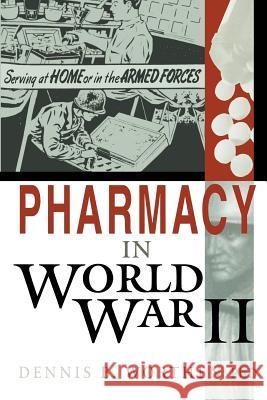Pharmacy in World War II » książka
Pharmacy in World War II
ISBN-13: 9781481054423 / Angielski / Miękka / 2013 / 310 str.
Learn the real story of pharmacy's "greatest generation" during the war years-at home and on the battlefield World War II was a historical watershed in American history, including the practice of pharmacy. Pharmacy in World War II is a comprehensive history of American pharmacy, both in the military and on the home front, from 1941 to 1945. The book provides a unique insight into the profession and its practitioners. Read about civilian practice activities, such as the quinine collection and the drives to reclaim tin tubes when supplies of both were controlled by the enemy. Discover how practitioners coped with the shortage of some materials and what ingenuous methods and expanded roles that they put into place to meet the needs of patients and customers. Through accounts stored in archives and told first-hand, you'll learn about the work of the Selective Service committees to preserve an adequate pool of pharmacists for civilian practice, the bond drives that would buy hospital airplanes and trains, and a great deal more. Pharmacy education was in a state of flux with accelerated classes, an increase in women, and the disappearance of young men into the military. Research in the pharmaceutical industry developed new products, such as the morphine Syrette, plasma and sulfa packages to meet battlefield conditions. Whole new classes of therapeutic agents, ranging from penicillin to Atabrine to blood products, emerged from industry. Among the experiences are those of the Japanese American pharmacists and almost 120,000 others unjustly imprisoned in the most desolate spots of America. The 70 year struggle to establish an Army Pharmacy Corps was finally successful in 1943. Pharmacists could be commissioned as officers and practice pharmacy. More important, the distribution system for men and women in the military was given the same safety oversight enjoyed by civilians. Over 12,000 pharmacists and pharmacy students served in military assignments, some as pharmacists or in the medical field. Many served in combat roles as pilots, combat soldiers, and sailors, others as medics or corpsmen. A number did not come home. Pharmacy in World War II documents the events and people who experienced a turbulent time and changed a profession.
Zawartość książki może nie spełniać oczekiwań – reklamacje nie obejmują treści, która mogła nie być redakcyjnie ani merytorycznie opracowana.











